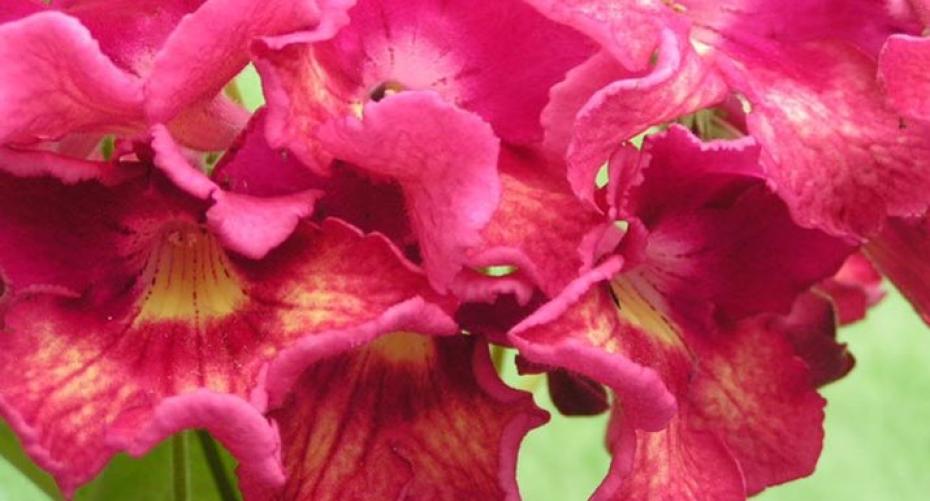Streptocarpus 'Adele'
Streptocarpus are an ideal showy, colourful and long-lasting houseplant
Few houseplants give as good and long lasting show as Streptocarpus. The first species was discovered in 1818 in South Africa, but it was another 30 years before another species was found. The seeds of this first blue flowered plant bloomed at Kew in 1827. They have been extensively hybridised since then producing a huge range of colours except orange and true yellow; some have yellow markings but as yet there is no completely yellow flower. Modern Crystal varieties will even flower almost all year round. Streptocarpus flowers range in size from large flowers on a single stem to dainty blooms which usually flower in sprays. Their common name is Cape Primrose after the fact that they were first discovered near the Cape and their leaves look like primrose leaves; but they are no relation to the primrose. Their natural habitat is evergreen forest and rocky hillsides in Africa. They require damp, well drained compost in semi-shade. Two noteworthy new varieties from Dibleys are Adele and Molly; both have large showy richly coloured flowers.
Watch the video to see how to keep your Streptocarpus flowering all summer.
Care
Propagation
Cut a fresh leaf from the centre of the plant. Place the leaf into a 9cm (3”) pot of compost, made up of half potting compost and half vermiculite. Place in a heated propagator with a slight bottom heat, 20C (68F). If you don’t have a propagator place some short pieces of cane around the edge of the pot then place a plastic bag over the pot, secure with an elastic band. Keep at room temperature out of direct sunlight. Keep the compost just damp. Within about 8 weeks a small plant should be growing at the base of the leaf. Gradually acclimatise the young plant to room temperature.
Light and temperature
Keep out of direct sunlight otherwise the leaves will burn, but if there is not enough light the plant will make large leaves and no flowers. A south or west aspect would be suitable in winter but a north or east facing window would be ideal in summer. A minimum winter temperature of 5C (41F) is required; an ideal summer temperature would be 20C (68F), if this is exceeded make sure there is good ventilation. Do not place them directly over a radiator.
Potting
Any good peat based compost is suitable. Use plastic pots as the roots attach themselves to terracotta and are damaged when they need re-potting. Make sure compost is damp before re-potting. Only re-pot when the plant has become completely pot-bound. They flower better if slightly pot-bound.
Watering
The amount of water given will vary according to the time of year and the conditions in which the plant is kept. Make sure the compost is kept just damp. Overwatering will lead to the plant rotting. They are tolerant of a short period of drought; if wilted they usually perk up again as soon as they are watered.
Feeding
Start feeding in early spring with weak high potash liquid feed every watering or use a slow release tablet specially formulated for Streptocarpus. Stop feeding in early winter.

Streptocarpus Molly
General care
Always deadhead as this encourages more flower production. Sometimes the ends of the leaves go yellow at the end of autumn; this is normal as the plant is conserving energy for the winter. Just cut off the yellow portion. They can be put out in the garden from after the last frosts to the end of summer; either planted or left in the pots. They need somewhere sheltered in dappled shade, such as the edge of a woodland garden not in direct sunlight.
Pests and diseases
Prevent fungal diseases by: not keeping plants cold and damp and ensuring there is good ventilation. Always completely remove any diseased parts of the plant to stop it spreading further.
Wilting can be a symptom of root rot caused by over-watering as well as under-watering. It may recover if left to dry out.
Spray with a systemic insecticide at the first sign of any pest infestation.
If the plant has wilted and over- or under-watering is not the cause take the plant out of the pot and check for the maggots of vine weevil; water the compost with a dedicated vine weevil killer or wash all the compost off the roots and re-pot.


